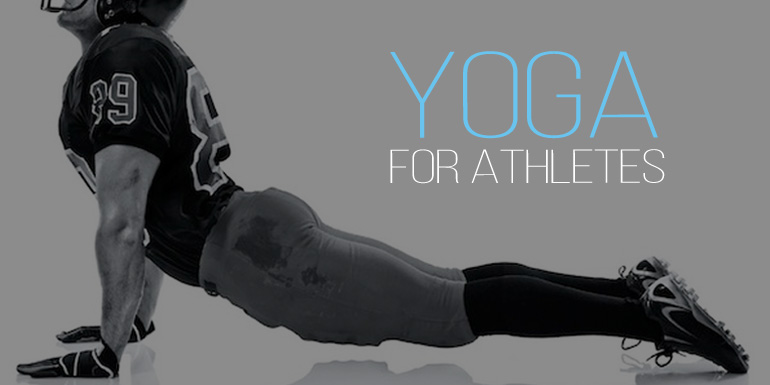
When we think of athletes, we naturally think of strength, speed, and endurance. What many don’t know is that performance also relies upon flexibility, balance, and recovery. That’s where yoga for athletes comes in. Doing yoga for athletes isn’t about becoming extremely flexible-it’s about maintaining the body’s resilience, avoiding injuries, and enhancing performance.
Whether you’re a runner on the pavement, a football player dashing across the field, or a weightlifter with heavy iron, yoga can put you in an optimal position to succeed. Let’s dive a bit deeper into the benefits of yoga for athletes, how it stacks up against stretching, and a quick
daily yoga routine for athletes that anyone can incorporate into his or her training regimen.
Why Do Athletes Need Yoga?
Training drills tend to emphasise repetition, repeated running drills, lifting patterns, or sport-specific movements. As time passes, these cause stiffness and muscle imbalances. That’s when sportspeople begin to realise tight hamstrings, aching shoulders, or limited mobility.
Here’s how yoga benefits athletes:
- It releases tense areas such as the hips, hamstrings, and calves.
- It tones stabiliser muscles that tend to be neglected.
- It instils improved body awareness, eliminating sloppy movements leading to injuries.
- It relaxes the mind and clears focus, particularly during pressure situations.
Thus, while lifting and conditioning develop power, yoga counteracts it by enhancing recovery and control.
Benefits of Yoga for Athletes
1. Flexibility That Facilitates Movement
Yoga poses extend muscles in various directions. Gradually, this added range of motion facilitates movements to be smoother and less cramped.
2. A Natural Defence Against Injuries
Strained or overused muscles are more prone to injury. Yoga synchronises opposing muscle groups and enhances joint mobility, reducing the risk of injury during competition or training.
3. Quicker Recovery After Training
Yoga increases blood flow, accelerating the ability of muscles to repair themselves. That translates into fewer sore days and a faster return to optimal levels of training.
4. Mental Toughness and Concentration
Mindfulness and breathwork are integrated into yoga. For athletes, it improves focus on the field and reduces stress before competition.
5. Balance and Stability
Single-leg pose or core-flow movements enhance coordination. Improved balance for athletes means improved posture, more stable form, and fewer injuries.
Yoga vs Stretching for Athletes
Athletes inquire about yoga vs stretching for athletes-don’t they serve the same purpose? Not exactly.
- Stretching engages one muscle, such as a hamstring or a quad. It’s good, but not comprehensive.
- Yoga engages groups of muscles, frequently combining strength, flexibility, balance, and breath in a single position.
Consider stretching to be a tool, and yoga to be the whole box of tools. If stretching is untangling one knot, then yoga is maintaining the whole rope in full strength and flexibility.
A Simple Daily Yoga Routine for Athletes
The best news is that you don’t have to take an hour-long lesson to enjoy the payoff. A 15–20 minute daily yoga routine for athletes can do the job. Use this flow:
Warm-Up & Mobility
- Cat-Cow Pose – awakens the spine and releases stiffness.
Flexibility & Strength
- Downward Dog – stretches hamstrings and shoulders, and involves arms.
- Low Lunge – will open up hip flexors, which tend to tighten due to running or sitting.
- Pigeon Pose – deep hip opener to release tension in the glutes.
- Seated Forward Fold – will lengthen hamstrings and quiet the mind.
Core & Stability
- Bridge Pose – strengthens glutes and lower back, enhancing stability.
Recovery & Relaxation
- Supine Twist – releases tension in the spine.
- Savasana – rest for the body to fully absorb the practice.
This brief sequence can be practised daily. Practice it in the morning for flexibility or post-training for recovery.
Conclusion
Yoga is not about performing handstands or extreme postures. For athletes, it is about balance, both literally and figuratively. The benefits of yoga for athletes are increased flexibility, reduced injuries, faster recovery, and improved mental acuity.
If you’ve been wondering how yoga helps athletes, think of it as the missing link in your training. Unlike standard stretching, yoga strengthens while it lengthens, relaxes while it energises. Add a daily yoga routine for athletes to your schedule, and you’ll notice the difference not only in performance but in overall well-being.
Frequently Asked Questions (FAQs)
Q1: How often should athletes practice yoga?
A1: Two to four times a week is good, but even 10 minutes a day can do it.
Q2: Can yoga take the place of stretching for athletes?
A2: Yoga is more comprehensive. It stretches as well as develops strength, balance, and concentration.
Q3: Does yoga actually enhance athletic performance?
A3: Yes. Improved flexibility, recovery, and mental concentration all contribute directly to enhanced performance.
Q4: What kind of yoga is best for athletes?
A4: Hatha and Vinyasa yoga are excellent. Restorative yoga is ideal for recovery days.
Q5: Is yoga safe for athletes with existing injuries?
A5: Usually, yes, but always modify poses and check with a doctor or physiotherapist if you’re in recovery.



No Comments yet!